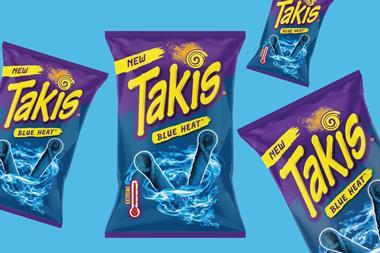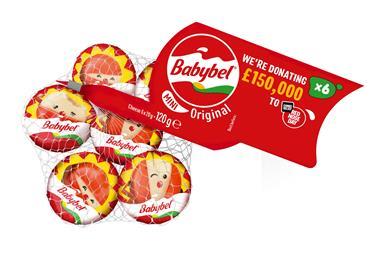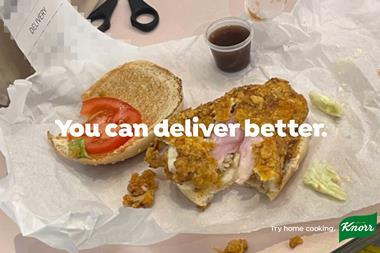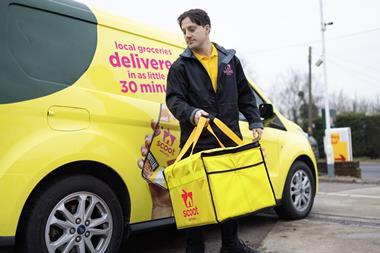Never mind the back end. Search is the most important component of successful e-commerce. But exclusive research for The Grocer reveals that some of the supermarkets are ill-equipped for the fight. Rob Brown reports
The war for shoppers’ wallets has gone virtual.
By the end of the year food and drink is expected to be the UK’s biggest online category, outstripping even consumer electronics and clothing in terms of pounds and pence spent [Forrester Research Online Retail Forecast].
Yet according to research carried out exclusively for The Grocer, the country’s biggest supermarkets are missing key tricks when it comes to upping their game online. And, as the Facebook generation matures and the internet becomes even more ingrained in our daily lives, many retailers will see their market share eroded by new enemies in cyberspace if they don’t address these failings.
The construction of some of our major supermarkets’ websites is so poor, according to the analysis by digital consultancy Reform, they will often not show up on search engines and are barely accessible on mobile devices. Even Google is critical of the supermarkets’ search engine optimisation strategies.
“They all need to improve,” says Simon Hall, Google UK’s retail industry manager. “They’re just not getting the exposure they should.”
There’s no doubt about the underdog, however. “Waitrose has had a shocker,” says one search engine expert, “making basic errors that are diffi cult to comprehend”.
Another describes the site’s construction as “a half-arsed job”. Waitrose.com – launched in March after an investment of £10m – is even beaten by Morrisons, which doesn’t actually operate an e-commerce site yet. “It’s a very expensive disaster said one angry shopper in a letter to The Grocer this week.
Our analysis explains why. It found that Waitrose’s URL structure – Uniform Resource Locator in geek speak, or a web address to the man on the street – which should be kept as simple as possible to make it easily identifiable to search engines such as Google, is in some cases so complex that Google ignores some of the website’s pages completely, because they exceed its URL length limit.
“I’d never seen URLs as long as Waitrose’s before,” says Juliette van Rooyen, the consultant at Reform who carried out the research on behalf of The Grocer. She points to the URL for Waitrose’s sweet biscuits sub-category, which is a whopping 130 words long (Google’s threshold is 32 words), as evidence of this structural sloppiness.
“Regardless of Waitrose’s focus in store, their site is so technically hampered they are going to have a problem ranking highly for anything. It’s terrible.”
But other retailers’ URL structures came off badly as well – Sainsbury’s is “poor” and Asda’s is “extremely long and SEO unfriendly” according to Reform. Not only does this mean these pages rank poorly on Google searches, it also means they are less likely to be trusted, says van Rooyen.
“Part of the issue with URLs is trust,” she explains. “If I see a URL that’s long and garbled I’m far less likely to trust the page than if I see one in plain English.”
Why optimise?
Retailers may question why they should invest in search engine optimisation. After all they have fought hard to cultivate shopper loyalty in their bricks-and-mortar stores so why shouldn’t that loyalty transfer onto the web?
It’s the back end that counts, isn’t it? Trouble is, a new generation of web-savvy, promiscuous shoppers is growing up and they don’t necessarily share the loyalties of their parents or peers.
If the supermarkets can woo them online, the rewards could be signifi cant indeed.
Online shopping must be approached in a different way, say the experts. “Making sure you target the right search words is important,” says Simon Hathaway, CEO of Saatchi & Saatchi X Europe. “You have to look at the words people are searching for.
Some US retailers have done particularly well through people searching for ‘turkey & ham pie’ after Thanksgiving. You can change shopping habits with recipes.”
Indeed, Reform found that while the supermarkets ranked well for searches such as ‘supermarket’ and ‘online shopping’, they rank particularly poorly for recipe searches or particular cuisines, which are far more relevant. For example Sainsbury’s gives each of its web pages the same title – ‘Sainsbury’s online groceries’ – giving it the highest score for the term ‘online groceries’. It’s just a shame, says Reform, that it’s not a term would-be customers are likely to search for.
“There are massive amounts of searches online for healthy eating – 50,000 every month – yet none of the supermarkets ranks for this search term at all,” says van Rooyen. To increase traffi c to their sites, she adds, retailers need to identify andtarget the most common search terms and ensure their content management systems are adaptable so websites can alter with the changing tastes of shoppers.
Of course success online will also rely on having relevant and interesting content on a website, and then taking steps to optimise that content so it can be seen by search engines. Martin Gill, principal analyst at Forrester Research, says that having decent content is one of three pillars that an effective e-commerce site must be built on – the other two are the facility to allow shoppers to rate and review products and link these ratings back to pages from which customers can buy them. “It’s about making sure there isn’t a divide between selling online and enticing potential shoppers online with your content,” he adds.
Mobile revolution
Surprisingly, Reform identifies Morrisons – the only major supermarket not operating an e-commerce site at present – as having some of the best content to appeal to customers.
While the site does not make good use of so-called ‘H1 headings’, a tool Google uses to shine a spotlight on a page’s topic, van Rooyen says Morrisons is in a good position to overtake the competition when it does decide to go into e-commerce.
The next frontier for all the supermarkets will be making sure their sites can be accessed from mobile devices.
Reform found that many of the supermarket’s websites are ill-equipped to deal with demand from shoppers who want to access their websites on the move because of their reliance on programmes such as JavaScript, which can disrupt mobile devices.
Supermarkets will ignore the mobile revolution at their peril. Britain is already Europe’s most developed market for m-commerce, says the Mobile Marketing Association, and a recent Tealeaf and Harris Interactive survey registered a 63% boost in mobile transactions in the past year, with 23% of respondents having bought online on their mobile phones.
The rise in tablet computing should be of growing importance to retailers too, says Rachel Smith, senior director for business services at shopping research body Shopzilla.
“iPads and other tablet devices are helping to drive the popularity of ‘social commerce’, with 53% of online consumers using their tablets to share online shopping activities with friends – whether it’s hunting for bargains, browsing reviews or making purchases.”
Political problems
The growth of mobile devices also means consumers may want to access information on retailers in their vicinity.
“It’s now beyond the point where all the supermarkets need to optimise – we’re getting to the point where individual stores need to optimise,” says van Rooyen. “For example, Waitrose has made a big splash about its Canary Wharf store, but it’s not optimised at all for location. So if I’m in Canary Wharf and I want to buy some Champagne and search for places where I can buy it in Canary Wharf, Waitrose won’t come up.”
Addressing these issues is political. Reliance on programmes like Flash or JavaScript is often the result of marketing and branding teams insisting on their use to ensure sites are attractive and portray brand credentials. But they can stand in the way of optimisation and restrict a site’s reach. In short, say the experts, the cool crowd in marketing and the techno geeks in IT need to work together to ensure online agendas are aligned.
And, until that happens, the supermarkets will not realise the full potential of the internet. “The supermarkets seem so fixated on their own agendas and what the rest of the big four are doing they don’t even seem to realise that people like Amazon are stealing their market share in categories like recipe books and dried goods. There’s such a discontinuity between what they are doing in store and online.”
If online grocery, like high street grocery, is to be dominated by the same handful of powerful players tomorrow, that will have to change.
How the supermarkets stack up online
Tesco
The sheer scale of Tesco means the retailer scores well in grocery-related online searches (the bigger a site, the better the chance of it appearing in search results). Reform says the large number of links pointing to the site and good use of the Google Shopping feed enhance Tesco’s score. However they add that URL structure could be improved and the homepage and top level categories could be better.
Ocado
It might not be making any money yet, but Ocado’s website is performing well. Performs identically regardless of whether JavaScript is enabled and offers the best mobile accessibility of all sites. Plain word URLs and specific page headings make it easily searchable. In the past fortnight the retailer has signed up to Google Shopping, a move Reform said would drive further traffic to the site and enhance its SEO.
Asda
The site’s structure led to a high number of its pages being indexed by Google and an extensive Google Shopping feed – second only to Tesco’s – helps drive additional traffic to the site. However, an inability to navigate the website without JavaScript enabled led to low rankings for keywords searched by Reform. The site has a mobile-friendly homepage, but clicking through to deeper pages causes problems.
Sainsbury’s
Run more like an old boys’ club than a modern online supermarket, according to Reform. Analysis suggests the strategy is to keep the site’s grocery section contained, for members only. Inaccessible with JavaScript turned off, so access is difficult on a mobile phone or iPad, the retailer’s visibility to search engines is hampered by the presence of two homepage URLs and poor URL structure, says Reform.
Morrisons
The only retailer that does not, as yet, run an e-commerce site. But despite the diminutive scale of the site, it has a large amount of rich, relevant content on the site, which greatly increases its ranking. Its composition means that it has the simplest, most easy-to-read URLs. As a result, Morrisons is in a prime position to overtake the competition online when it does finally leap into e-commerce.
Waitrose
Despite Waitrose forking out a reported £10m on its new site earlier this year, waitrose.com is still blighted with technical issues – such as long, garbled URLs, which make it a turn-off for search engines. Reform found that the site ranks OK for generic search terms, but who searches for ‘supermarket’ when they want to do a bit of online shopping anyway? Could also drive traffic by using Google Shopping.



















No comments yet